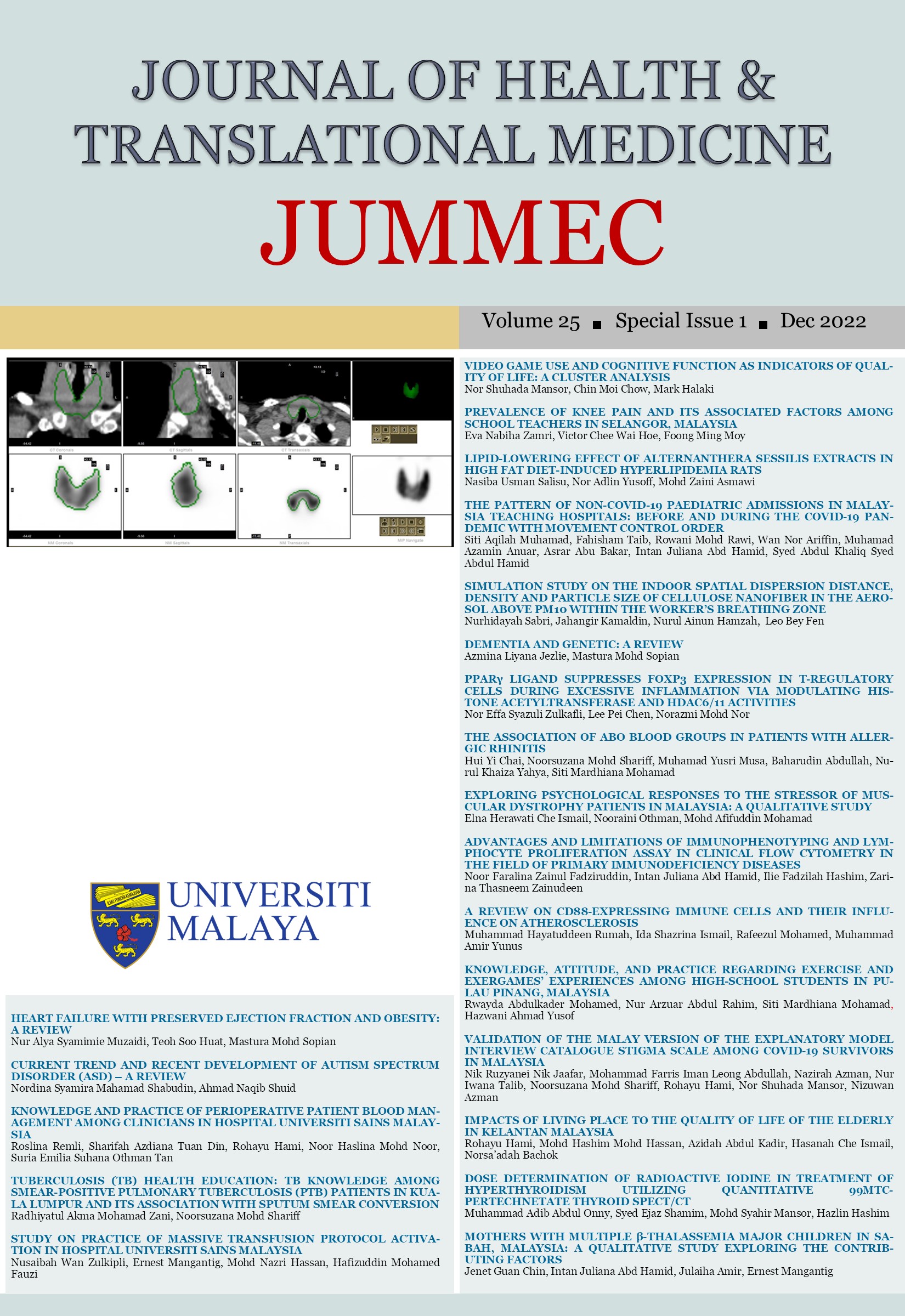PPARγ LIGAND SUPPRESSES FOXP3 EXPRESSION IN T-REGULATORY CELLS DURING EXCESSIVE INFLAMMATION VIA MODULATING HISTONE ACETYLTRANSFERASE AND HDAC6/11 ACTIVITIES
Received 2022-06-15; Accepted 2022-09-10; Published 2022-12-31
DOI:
https://doi.org/10.22452/jummec.sp2022no1.7Abstract
Natural T-Regulatory (nTreg) cells represent approximately 8-10% of the total CD4+ T cell population and constantly expressing Foxp3 proteins. These cells are crucial for immune homeostasis, preventing over-inflammation and autoimmunity. Our previous study reported that PPARγ ligand, 15d-PGJ2 negatively influences the expression of Foxp3 in nTreg cells, which reflexes the attenuation in immunosuppressive function of nTreg cells. This study aims to unveil the molecular mechanism of Foxp3 suppression by PPARγ in nTreg cells during autoimmune Type 1 Diabetes. Co-stimulatory proteins were measured using flow cytometry and methylation measurement of Foxp3 expression was measured based on histone modification activity. Nuclear proteins of isolated cells were extracted out to measure two HDAC and two HAT enzyme activities using ELISA. Purified nTreg cells were isolated using MoFlow Cell sorter, and will be then cultured for 72 hrs to mimic the TCR activation and downstream signalling. The expression of Foxp3 in these cells were measured using flow cytometry analysis and were positively selected. Current data showed that histone acetylation activities were cross talked with PPARγ pathway in nTreg cells from diabetic, but in healthy mice. FoxP3 gene expression may be regulated via histone modification that in diabetic mice via PPARγ- independent pathways. Altogether, this study provides fundamental analysis on the putative role of PPARγ ligand 15d-PGJ2 as HDAC6/11 inhibitors. Therefore, this may suggest that combination of 15d-PGJ2 and GW9662 can be an alternative to HDAC6 inhibitor which is less toxic compared to pan-HDACi in treating inflammatory-related diseases. These ligands also potentially able to suppress the microenvironment of nTreg cells protecting tumour-bearing cells.
Downloads
Downloads
Published
Issue
Section
License
All authors agree that the article, if editorially accepted for publication, shall be licensed under the Creative Commons Attribution License 4.0 to allow others to freely access, copy and use research provided the author is correctly attributed, unless otherwise stated. All articles are available online without charge or other barriers to access. However, anyone wishing to reproduce large quantities of an article (250+) should inform the publisher. Any opinion expressed in the articles are those of the authors and do not reflect that of the University of Malaya, 50603 Kuala Lumpur, Malaysia.


